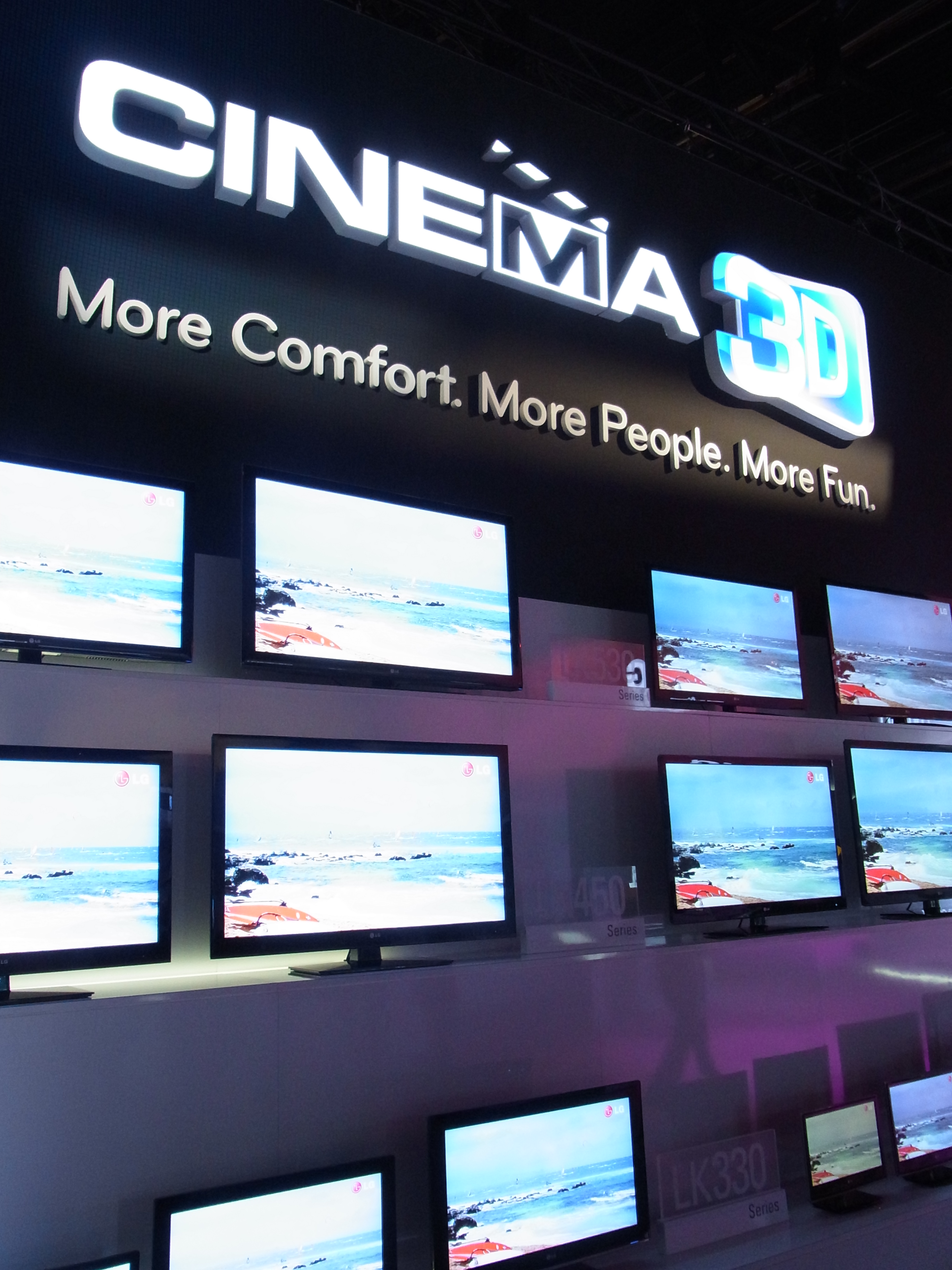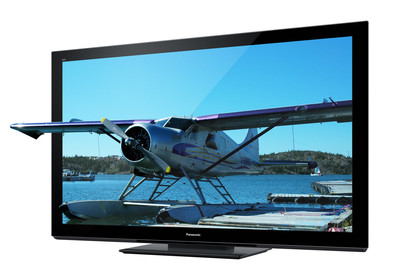3D TV: all your questions answered

3D TV, or stereoscopic TV, is an effort at mimicking reality. It's an optical illusion, a trick to make our brains think something's got depth, when it hasn't - to make something look real, when it's not.
That may sound a tad dishonest, but it's not different to adding extra detail with high definition cameras. 3D has broadly the same aim; though technically speaking it's completely different to HD.
With 3D glasses on, each eye sees a slightly different image; your brain does the rest in creating the illusion of both depth and 'front' effects in what is obviously a completely flat image.
What is 3D TV?
3D TV is the generic name we give to the idea of watching 3D content on our own TVs at home. So it refers to both the 3D TV devices themselves, as well as the 3D TV content from sources such as Sky 3D.
Which 3D TV should I buy?
That depends on what you want it for - and how much you can afford. First, decide why you want a 3D TV, and finalise your budget.
Is it for 3D Blu-ray movies, gaming or sport? For 3D Blu-ray movies, you'll find an Active Shutter 3D TV that can show every pixel of a 3D Full HD formatted film will best suit - and that's a plasma from either Panasonic or Samsung.
All Active Shutter 3D TVs use bulky 3D glasses that are expensive - most 3D TVs of this kind come with only one or two pairs of 3D specs. Here, it's not about saving money, but ultimate picture quality.
Sign up for breaking news, reviews, opinion, top tech deals, and more.
If you're more interested in watching Sky's 3D channel - a mix of mainly sport and movies - and you're not after high definition, demo LG's 'Cinema 3D' line-up that use Passive 3D tech, which is similar to the system used in 3D cinemas (hence the name).

FULL GLASSES: LG's new line-up of Passive 3D TVs include a stunning seven pairs of 3D glasses with each TV
Meanwhile, broadcast 3D pictures are sent over Sky's satellites (and occasionally Virgin Media's cable network on Eurosport 3D or BBC HD) in two standard definition halves, which when sewn together by the human brain - goes the theory - creates an image that's both 3D and HD. In practice it's not as impressive a 3D effect, because it's not as convincing, but it's far cheaper. For starters, the 3D specs used on Passive 3D TVs cost £2 each.
3D gaming generally looks good on both Active Shutter and Passive 3D TVs. Normally rendered in 720p rather than Full HD 1080p, the amount of detail isn't so important and nor is the onscreen action required to mimic reality.
Which is the best 3D TV?
The best 3D TV is the biggest 3D TV. We'll start with the premise that you don't have squillions to spend on huge - and hugely expensive - 3D TVs from Bang & Olufsen or Panasonic and work backwards, but if you want a fighting chance of total immersion then we'd recommend that you don't go smaller than 50 inches.
3D is all about immersion and replicating a human being's stereoscopic field of vision; it's about fooling your brain into thinking it's watching reality, not fiction, and if a TV is too small it just doesn't convince. As much as possible of your field of vision has to be filled, but finding the best 3DTV for you is not just about size.
Panasonic's VT30 Series are the best 3D TVs around, though the more affordable GT30 and ST30 Series plasmas are also worth looking at. Samsung's 3D plasmas aren't bad, either, while Samsung, Sharp, Sony, Panasonic and LG all make some notably good 3D LED TVs using Active Shutter tech.
These tend to come in a variety of sizes, though it's worth recognising that a 32-inch 3D TV is designed largely for convenience, not effectiveness.

TOP QUALITY: Panasonic's VT30 Series are regarded as the best mainstream 3D TVs around - and they all use plasma panels
Although LG makes Active Shutter 3D TVs, it now concentrates on Passive tech for its mid-range 3D TVs, as does Toshiba - and soon Philips. The TVs use a special polarised screen, and are basically an effort to cut the price of 3D TVs, though it also cuts-out flicker.
Find out which is best - Active Shutter or Passive – in our Active Shutter vs Passive 3D article, but remember that this isn't a 'format war'; both types of 3D TV can display all sources of 3D - including Sky's 3D channel, Virgin's 3D VOD, 3D Blu-ray and 3D gaming.
3D TV with glasses
Active Shutter 3D TVs uses battery-powered glasses that need to sync with the TV to ensure each eye is getting the correct image. It does this by polarising the image into two, with each eye getting a slightly different feed; the illusion of depth in a flat image follows.
They're expensive and uncomfortable, and they're often marred by annoying reflections from nearby windows, especially if there's a light source behind the sofa.
Our main problem is having to sit bolt upright to get the 3D effect; lean back in a sofa and the 3D glasses point to the ceiling, while lying down sideways kills the image completely.

LOOKING IN: Despite this image, 3D TV is more about depth perception than about objects leaping from the screen
3D TV without glasses
With the arrival of glasses-free - or auto-stereoscopic - gadgets like the Nintendo 3DS, 3D TVs are bound to follow suit.
Some pour scorn on the idea as a mass market, affordable product, but the broadcast TV industry wants it and such TVs do already exist in Japan.
But how do 3D TV without glasses work? Instead of glasses being used to differ the image seen by each eye, an auto-stereoscopic TV has a lenticular lens in its glass panel to do the job instead.
There are two catches. The first is that the lens cuts-down on resolution really quite massively, meaning that the actual 3D panel needs to have a '4k2k' resolution, which makes the loss of detail less crucial. A bigger issue (4k2k TVs are destined for mass production) is the number of 'views'. There are only so many 'corridors' or 3D 'sweet spots' on such screens, with a noticeable visual 'blip' between them; moving your head from side-to-side in front of an auto-stereoscopic 3D TV is headache inducing.
The challenge for TV engineers is to increase the number of views, and eliminate the gaps between each; the current form is nine views, with around 15 needed to make such TVs comfortable enough to watch.
Another factor is the viewing angle; the 3D effect is ruined outside of a 40-degree area in front of the screen, so there's no chance of a crowd gathering around to watch an auto-stereoscopic 3D TV.
As well as a glass-free 3D laptop, Toshiba plans to bring 12-inch and 20-inch auto-stereoscopic 3D TVs to market next year.
Others are bound to follow; this 3D tech - like Active Shutter and Passive 3D TVs - is likely to grow-up in the consumer market, making gradual improvements with every generation. Early adopters, beware.

Jamie is a freelance tech, travel and space journalist based in the UK. He’s been writing regularly for Techradar since it was launched in 2008 and also writes regularly for Forbes, The Telegraph, the South China Morning Post, Sky & Telescope and the Sky At Night magazine as well as other Future titles T3, Digital Camera World, All About Space and Space.com. He also edits two of his own websites, TravGear.com and WhenIsTheNextEclipse.com that reflect his obsession with travel gear and solar eclipse travel. He is the author of A Stargazing Program For Beginners (Springer, 2015),